We have created a range of products based on the essential oil of PDO fine lavender from “Provence Direct Producteur.”
Our farm is located in Sault, in the French region of Provence.
The basic ingredient of our cosmetic products is the PDO fine lavender essential oil that we have been producing and distilling on the farm for several generations. The cosmetic products are made in Provence. The cosmetic products are made in Provence.
The Provençal tradition of lavender skincare products is perpetuated in our range.
The direct sale without intermediaries allows you to buy your products comfortably from home.
The Sarraud range brings together the essentials of moisturising, soothing, softening and restructuring natural beauty.
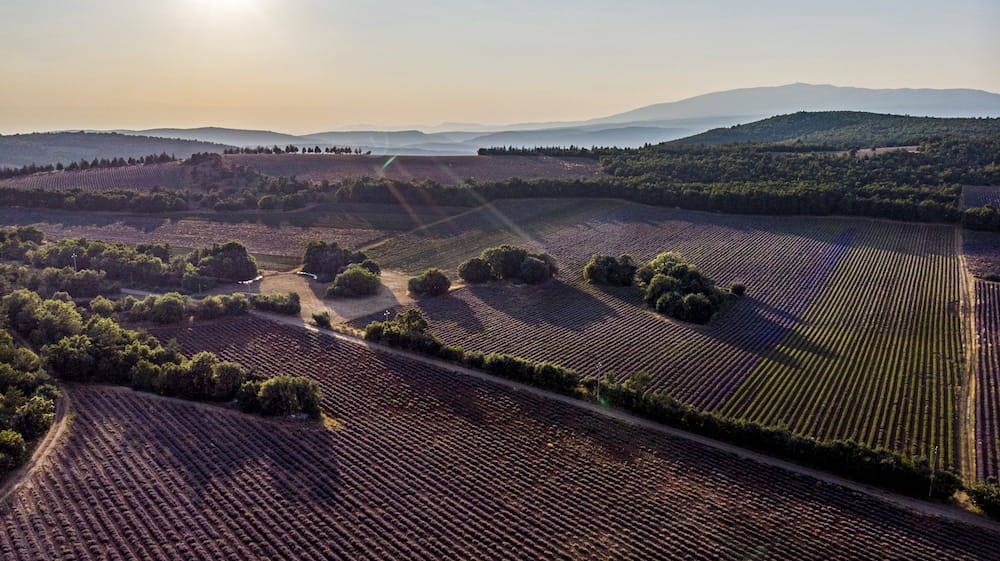
On our Sarraud Farm, the tradition of growing fine Provence PDO lavender has been passed down from father to son for six generations of farmers.
The family settled here in Sault around 1500.
In 1866 our ancestor Eugène Cheyrias settled on the plateau. He began picking wild lavender on the moors and in the hills in 1887.
Eugène ploughed the wild lavender moors and this is how the cultivation of fine lavender began in Sarraud. Today the sixth generation is taking over the farm to cultivate fine lavender in Sarraud.
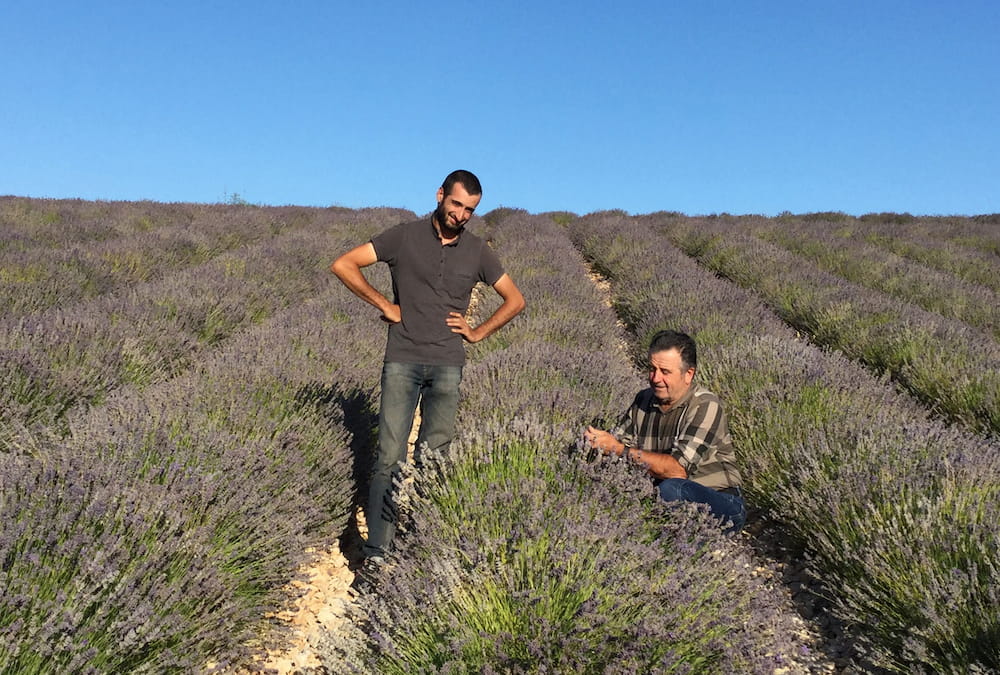
Today we cultivate 210 hectares of which 150 hectares are devoted to lavender, 50 hectares to lavandin and 10 hectares to rotational cultivation. We are specialists in fine lavender.
The life span of a lavender plantation is about 12 years. When we pull up old plantations, we sow artificial meadows, for example sainfoin, to let the soil rest.
We only use organic fertilizers to preserve the soil and to improve the production of lavender plants.
We distil our lavender and lavandin traditionally. We cut the lavender and let it pre-dry for about three days, then we distil the lavender with rainwater. The rainwater is collected all year round in water retention tanks. The essential oil of lavender or lavandin is a 100% natural product. It is the plant that produces the essential oil. There is no chemical transformation. Our distillery is equipped with an 8000L still.
The process of lavender distillation:
Lavender is piled up in the still, the steam passes through the flowers and is enriched with essential oil. The gaseous mixture of steam and essential oil then passes through a coil to condense. This mixture arrives in a drum, called in French an essencier. The essential oil is lighter than water. It rises to the surface and can be skimmed off.
Part of the hydrolate is recovered for cosmetics, the other part returns to the circuit.
We have selected lavender and lavandin for their very blue colour. Bunches are cut by hand in the fields. We bring them back to the shed where we place them on rails in the shade, upside down to dry. Once dry, we arrange and weigh the bouquets, 100g for lavandin, 80g for lavender. The final stage is packing the flowers into boxes.
At the beginning of July, we cut the lavender and lavandin and dry them on our terraces. When the lavender and lavandin straw is dry, we separate the straw from the flower with a combine harvester, then we sieve the flower to remove all impurities (dust, small straw, etc.).
We harvest our own fine lavender seeds in order to preserve the original strain. The lavender seed is infinitely light and is found in the flower calyx.
We have been growing lavender and lavandin in monoculture for 30 years. Our working method is traditional. The pleasure of working the land and the desire to share this excellent product that is fine lavender gave us the desire to develop our range of cosmetic products based on PDO Fine Lavender essential oil. We wish to share all the benefits of aromatherapy and PDO Fine Lavender essential oils.
We are committed to sustainable agriculture. The use of phytosanitary products is minimized to preserve the quality of the soil and the environment as well as to obtain a lavender product of the highest quality.
On Sarraud Farm we are far from the working pace of farms on an industrial scale. Progress through innovation is integrated into the way of working on the farm, while respecting the artisanal quality of the processes. Being a farmer today requires a lot of patience and respect for nature in the daily work.
The work on the farm lasts all year round with a huge peak in summer during the lavender harvest in July and August.
All our products are made locally on site in Sarraud. Transport requirements are minimal. The traditional distillation of all varieties of lavender is carried out with an 8,000 L still. The steam distillation process is completely artisanal in order to obtain an essential oil of superb quality and elegant fragrance.
Ensuring the survival of French agriculture is our motto by developing our products in a short circuit, directly from the producer to the consumer.
The manufacture of our skincare products is 100% local.
We cultivate our land in Provence at altitude and manufacture the least processed products directly here on the farm. The manufacture of the more elaborate Sarraud skincare products takes place in a laboratory in our region in Provence.
This way, we promote Provençal agriculture by producing quality, healthy and sustainable cosmetic products.
We use the lavender essential oil that we have been producing in sustainable agriculture for generations on our land in Vaucluse in Provence.
Creation of the values Made in France, Slow Cosmétique et Cosmos bio with a transparent and honest approach.
The right price with the short circuit of the cosmetic product.
The products are elaborated with the minimum of ingredients of course.
100% local
100% transparent
100% quality
Although it may seem obvious, we will say it anyway: our products are made without dyes and without parabens.
Our cosmetic formulations are short and effective. We want to use the strict minimum of ingredients to create a healthy, non-toxic and stable product. We avoid artificial colours and preservatives. The fragrance is composed only from our farm’s PDO Fine Lavender essential oil, a simple formula without synthetic perfume.
In the elaboration of our products each component has a function. We try to respect simple and effective formulas with the maximum of organic ingredients from sustainable agriculture. Healthy, simple and authentic products are the aim of our research.
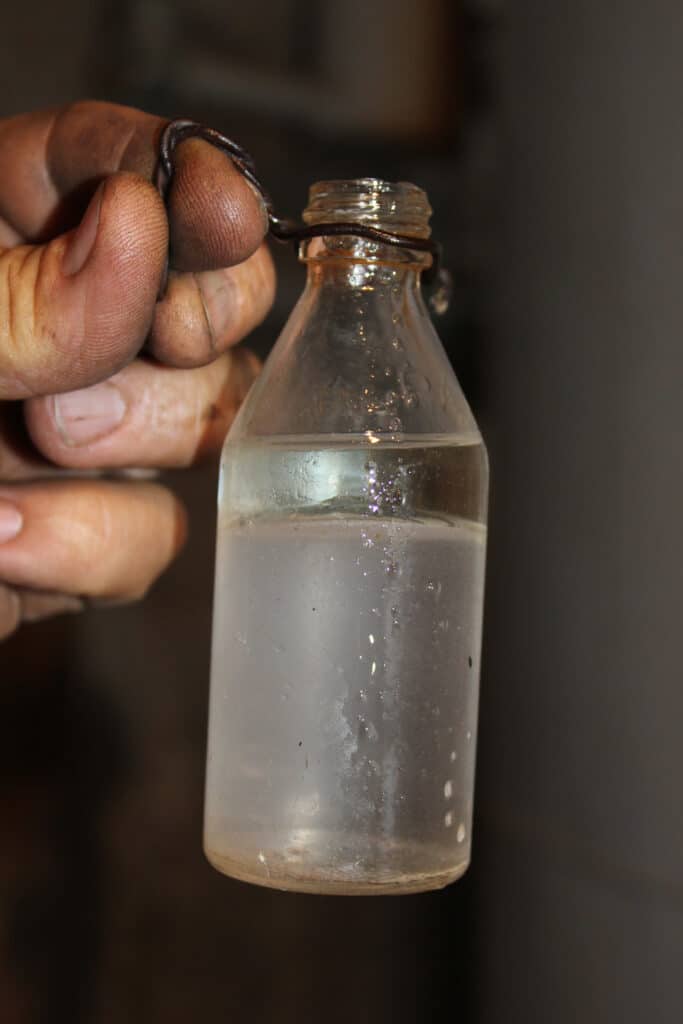
The origins of the name lavender come from the Latin lavare which means “to wash”.
This emblematic plant had become indispensable in Roman baths. It was the symbol of cleanliness and purity.
Lavender is a typical plant of Haute Provence. It likes heat and dry summers. Lavender needs 12 to 16 hours of sunshine per day.
The well-known properties of lavender make it one of the most widely used plants in medicine, perfumery and aromatherapy.
Lavender is the emblematic plant of Provence.
Lavender is the emblematic plant of Provence. It is exposed to less noble competition from synthetic perfumes and competing production abroad. At the same time, the cultivation of lavandin is intensifying everywhere.
Fine lavender, true lavender, spike lavender, lavandin… lavender has many varieties.
Each species of lavender has its own characteristics and is different from the others. Lavandin, the most common lavender in fields today, is a hybrid, but no less interesting. Fine lavender, also called true lavender, and spike lavender are wild species, but the olfactory qualities of true lavender have made it the treasure of French perfumery.
Fine lavender, also called true lavender, and spike lavender are wild species, but the olfactory qualities of true lavender have made it the treasure of French perfumery.
Essential oil, which is extracted from the plant, is secreted by glandular hairs on the calyx of the flowers. The difference between lavender and lavandin however leads to distinct uses, one is more than appreciated in perfumery, whereas the other will be rather reserved for industry.
The cultivation of perfume plants is gradually disappearing, and synthetic perfumes are gaining ground. Provence is losing the poetry of lavender fields and the local economy is disrupted.
The change in the fashion of smell is one of the reasons in the development of chemical fragrances.
Did you know that? It is quite easy to recognise a field of lavandin or lavender from a field of true lavender. The former is composed of a sterile plant, i.e. clones of the same plant. The colour and general appearance of the field will therefore be uniform. A field of fine lavender, on the other hand, offers a whole range of purplish blue shades made up of plants that are all different from one another.
Lavender essential oil is one of the best known and most widely used oils, forming part of the everyday pharmacopoeia in many households. Each species of lavender has a different biochemical composition from its cousins in terms of the essential oil which is extracted from its flowers. And this difference between lavender and lavandin essential oils is quite marked, as the different substances that compose them give them various medicinal properties.
Despite their visual and botanical closeness, it is easy to notice differences between lavandin and lavender. Lavandin, taller and more branched, has a camphor-like scent, whereas the single spikes of fine lavender have a more delicate fragrance. In fields, lavandin’s uniformity is the most striking feature, whereas lavender will offer beautiful shades of colour. In gardens, only lavandin can be seen because of low altitude.
Scents: floral, fine, elegant, subtle, sweet, woody
Fine lavender grows spontaneously in Haute Provence, on arid, stony and chalky terrain, between 800 and 1200m.
Our Provençal climate is characterised by two rainy seasons in spring and autumn, a very dry summer, and a winter with frequent snowfalls.. The thermal amplitudes and the rain concentrated by seasons contribute to improve the quality of fragrant aromatic plants.
Fine lavender is between 25 and 60cm tall. The plant has long, thin leaves as well as a single, long, thin flower spike per stem. The spike of fine lavender is small. The spike of fine lavender is small. . A field of fine lavender has a very irregular appearance because each plant is unique due to genetics.
Fine lavender fields can be recognised by their delicate blue colour. The colour of fine lavender varies from violet, to sky blue, to deep blue, to grey blue.
It flowers from the end of June to the end of August, depending on weather conditions.
Fine lavender is a wonderful plant that has remarkable properties, especially through its essential oil. Fine lavender is one of the most popular plants in aromatherapy.
The PDO Fine Lavender label is an attempt to promote and protect fine lavender.
The creation of this label is beginning to bear fruit. Affected by the lavender disease crisis and the fight against the use of chemical aromas, fine lavender is now rising from its ashes.
The complexity of its aromatic compounds gives fine lavender various medicinal properties.
It is because of its power over the body and mind that fine lavender has always been harvested in its natural environment.
There are more than 300 aromatic compounds and over 600 molecules in fine lavender, which gives it an exceptional olfactory quality.
The fragrance of fine lavender is very fine, complex and pleasant.
The fragrance expresses the serenity and tranquility of the mountains of Provence.
It is undoubtedly an invitation to relax and dream.
The complexity of the aromatic composition of fine lavender gives it a thousand uses, for perfuming and for healing in aromatherapy.
Fine lavender provides an essential oil of great quality, and is the only one to benefit from the PDO “Lavender of Haute-Provence” label. Its fragrance is very delicate, floral and subtle. 150 kg of flowers are necessary to produce 1 litre of essential oil.
Fine lavender is the original plant of lavender. Fine lavender reproduces by seed. It can also be found in the wild on the highest plateaux in Sault. Each farm produces its own fine lavender, different from the others. This is a characteristic of fine lavender. In a field of fine lavender, you will find thousands of different flowers.
The other lavenders are always cloned and therefore genetically identical, no matter which farm grows them.
The characteristic smell of our PDO fine lavender in Sarraud is a woody note Its fragrance is noble, refined and deep. The smell of fine lavender is less powerful than the smell of lavandin or clonal lavenders.
The yield of essential oil is lower than with lavandin but its properties are more interesting and more numerous.
Fine lavender is used for perfumery as well as for its medicinal, analgesic and healing properties.
PDO fine lavender is highly coveted by the perfume industry in Grasse.
Anecdote.
The seducer Casanova used to perfume his letters with fine lavender to charm his female correspondents.
Scent: pleasant, floral and herbaceous notes, slightly camphorated, quite complex
The scent of lavender Maillette is very aromatic and powerful, evoking Provence.
The ‘Maillette’ variety is the most widely used lavender for its essential oil.
Maillette is a clonal lavender.
Clonal lavenders have been cultivated for a long time in high altitude areas.
They are propagated from a single plant from which cuttings are taken. The mother plants obtained by vegetative propagation give a clonal progeny consisting of plants that are all genetically identical.
Maillette lavender has been cultivated for about 60 years.
Lavandin is a variety of lavender. It is a hybrid between fine lavender and spike lavender.
Like all hybrid plants, lavandin cannot reproduce naturally by sexual reproduction. Cuttings must be taken. Lavandin is a large, regular and well rounded plant. The flowering is dense and full. The flower can be twice as long, compared to fine lavender! Lavandin has branched stems, fine lavender does not. A lavandin field has a very regular aspect.
The scent of lavandin is strong. less delicate than the scent of fine lavender. Its camphor content is high.
Clonal lavandins have been cultivated in high altitude areas for a long time.
They are propagated from a single plant from which cuttings are taken. The resulting mother plants produce clonal offspring through vegetative propagation, consisting of genetically identical plants. All lavandin plants are cloned and are therefore hybrids (sterile).
Lavandin grows at almost all altitudes and can also be found by the seaside or in the plains, always on rocky, chalky terrain. Very robust, it is the most widespread of lavenders and very common in southern France.
Lavandin is used in the household products industry, such as washing powder. In the shower, people often wash with a lavender product.
Lavandin is also used in aromatherapy.
With massive use of lavandin in the industry, we have lost our sensory bearings. Nowadays, people who are able to differentiate between the scents of lavender and fine lavender are rare due to the mixing of aromas practised by the industry. In many everyday products, the lavender aroma is replaced by lavandin.
Lavandin is the ornamental plant par excellence. It is planted all over the world to beautify gardens. . Lavandin illuminates and perfumes gardens in all latitudes.
Essential oil of lavandin, grosso, super or abrialis. Lavenders are quite a mess in aromatherapy with their different names. And if we add the lavandins, which are hybrid varieties, i.e. a cross between true lavender and spike lavender, then we’re not out of the woods yet!
The scent of lavandin can be considered for diffusion in your home.
The scent of lavandin is more common than the scent of true lavender.
Lavandin is widely used for various industrial purposes. The plant is very productive. It gives 1 litre of essential oil for 50 kg of the flower. Lavandin is not used in quality perfumery.
Its fragrance is more camphorated compared with fine lavender.
A distinction is made between the widely used Grosso lavandin and the more characteristically scented Super lavandin, or the lesser known but equally interesting Abrialis variety.
It is mainly lavandin that is the olfactory component of many derivative products on the market (candles, home perfumes, etc.).
The essential oil of lavandin differs from true lavender in particular by the presence of camphor, which explains its stronger fragrance and its precautions for use.
Lavandula Hybrida Super
Scent: characteristic of lavender blossom, slightly camphorated, quite subtle, the lightest of lavandins
A versatile essential oil.
Lavandin Super is characterised by a less spicy and camphorated scent than lavandin Grosso.
It owes its name to the brightness and strength of its pale blue colour.
Lavandin Super is a plant of the Lamiaceae family that grows in Europe, particularly in France and the western Mediterranean. It is the largest of lavandins. Its flowers are pale blue and very fragrant. Lavandin is a cross between true lavender and spike lavender. The plant flowers in summer.
Very similar to fine lavender, Lavandin Super is used as a cheaper substitute.
Lavandula Hybrida Grosso
Scent: floral camphorated, fresh, dynamic, strong
The typical scent of Provence.
Lavandin Grosso is very fragrant in flower brings a pleasant scent to the house.
It is also used as dried scented flowers.
Lavandin Grosso is a pure and natural clone, robust and productive. It is the most widely cultivated lavandin. Lavandin Grosso fields are very blue. The plant is of large size.
Lavandula Hybrida Abrialis
Scent: warm, slightly camphorated, strong smell between Grosso and Super
A versatile essential oil.
The flowering of the shrub is longer and fuller than lavandin Grosso. Paler lavender colour.
Lavandin Abrialis is the perfect balance of True lavender and Spike Lavender. I
It is quite rare in essential oils offered to the general public.
Aromatherapy is the term used to describe the treatment of illnesses through the use of aromatic materials.
Aromatherapy uses essential oils, whereas phytotherapy uses plants in other forms, e.g. infusions, mother tinctures etc.
a Aromatherapy is included in alternative medicine which is quite trendy nowadays. Aromatherapy is becoming very popular.
More than 80 properties have been identified in the various essential oils.
We only work with laboratories in our region in Provence to develop our products. The products are made in a traditional way. The Made in France concept is essential for us. Our Sarraud PDO fine lavender is transformed into beauty products locally with minimal ecological impact. The formulations are 100% made in France. We favour ingredients grown in France. However, some of the components of our cosmetic formulas – with irreplaceable benefits – are derived from plants that are not grown in France, for the moment. Please note that we like to work in total transparency.
All our packaging is recyclable.
Tube and airless packaging is made of recyclable plastic until we find better alternatives to plastic. It is important to us that packages are as light as possible to minimise the cost of shipping and the environmental impact.
Packaging for oil products is made of glass and is recyclable.
We use as little packaging as possible when shipping to customers. Packages are minimized in weight and size, for a better carbon footprint
We prefer to ship directly to mailboxes whenever possible.
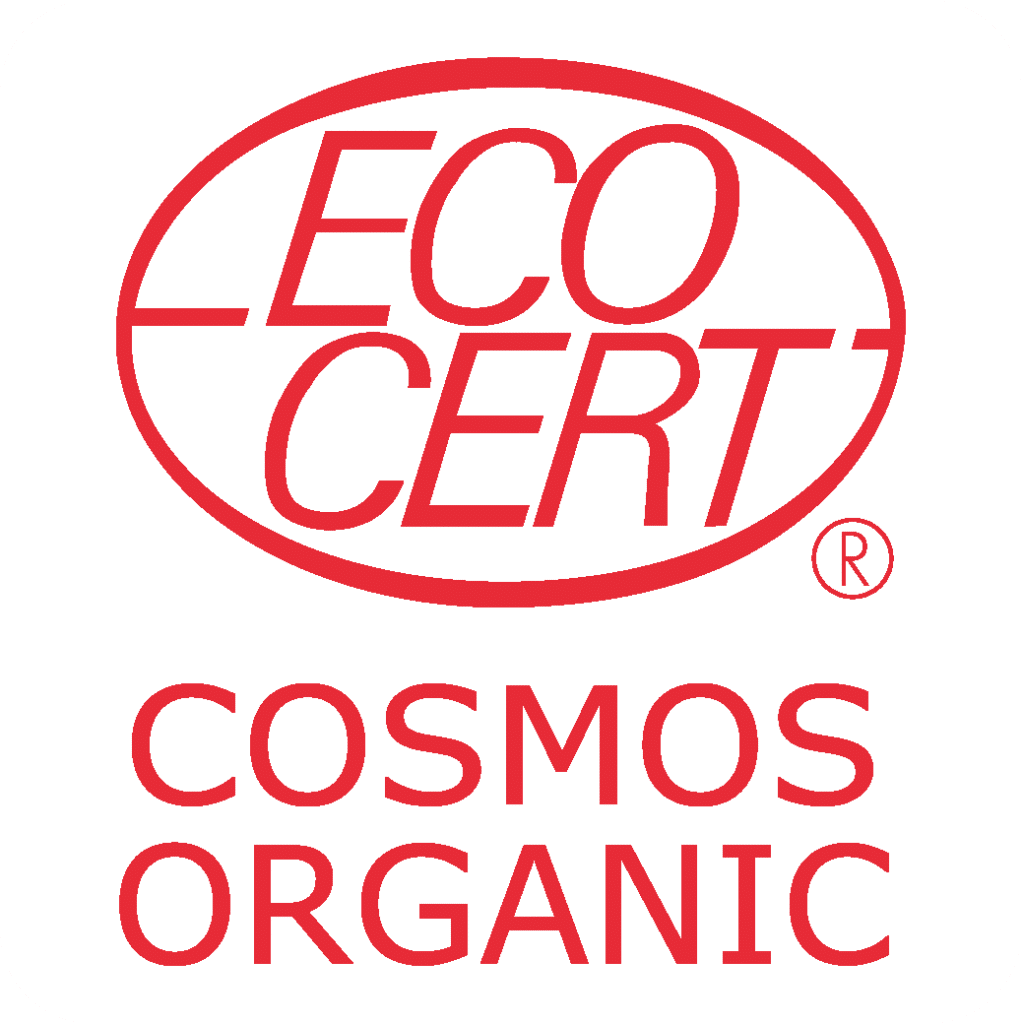
All SARRAUD cosmetic products are COSMOS ORGANIC certified.
This is the certification according to the international COSMOS standard following the Ecocert reference system, which enables natural or organic products to be labelled.
All products marketed with the Ecocert logo have been checked by Ecocert teams: from composition and processing to packaging.
Information is transparent on the content of natural and organic ingredients indicated on our products.
Natural origin
All the ingredients used are of natural origin, with the exception of a restrictive list of approved ingredients (including preservatives) authorised in small quantities.
On average, Ecocert certified products contain 99% of ingredients of natural origin.
Promotion of organic products
A beauty product is COSMOS ORGANIC certified:
The COSMOS label guarantees that the chemical ingredients used in the usual creams have been replaced by natural ingredients or ingredients of natural origin. Some synthetic preservatives such as parabens, phenoxyethanol, etc. are banned, as are petrochemical derivatives (paraffins, silicones, PEGs (polyethylene glycols).
The COSMOS label certifies that the production and transformation processes used are respectful of the environment and human health.
Finally, all the packaging used is biodegradable or recyclable.
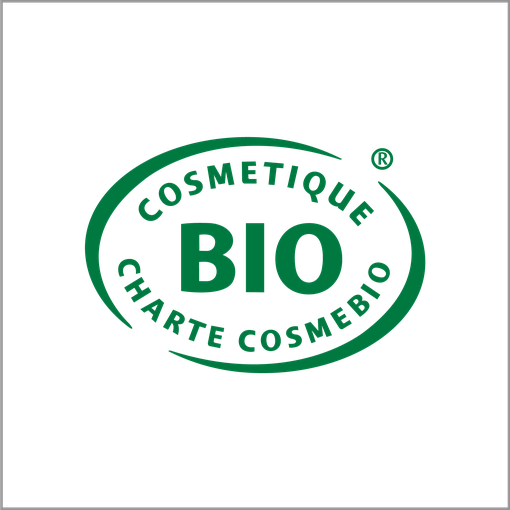
As an association, Cosmebio offers a lot more than a label you can trust to guarantee the content of organic cosmetics.
Cosmébio was born out of a powerful will to offer organic cosmetics that preserve both our health and the environment.
To verify compliance with product composition requirements, we call on independent certifying bodies. Organic and natural cosmetics are not just products formulated with ingredients of natural origin but they also promise to respect the environment, promote social values and communicate with complete transparence.The Cosmebio label guarantees that the products are following these requirements ! The label Cosmébio ensures that the technical requirements for natural and organic cosmetics have been respected.
It ensures that the respect for mankind and the environment have been considered and ensures a responsible and transparent communication.
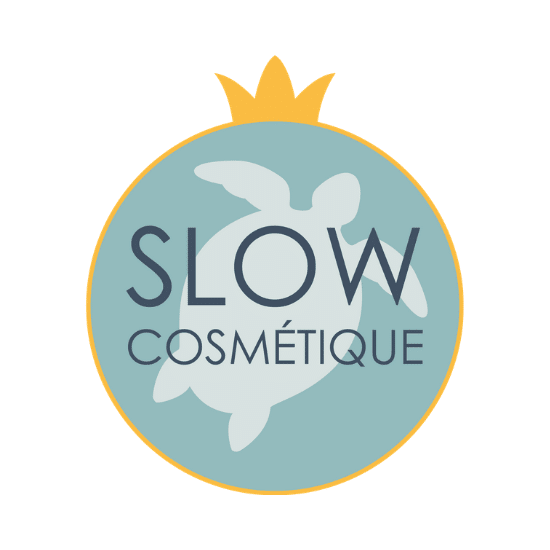
Un mouvement pour une cosmétique plus raisonnable et écologique composé principalement des petits marques indépendants.
Une façon de consommer la beauté autrement,
La Slow Cosmétique® is an ethical and ecological approach based on willpower to promote the way of consuming natural, sound, smart and reasonable cosmetic products.

Help and support
Contact us